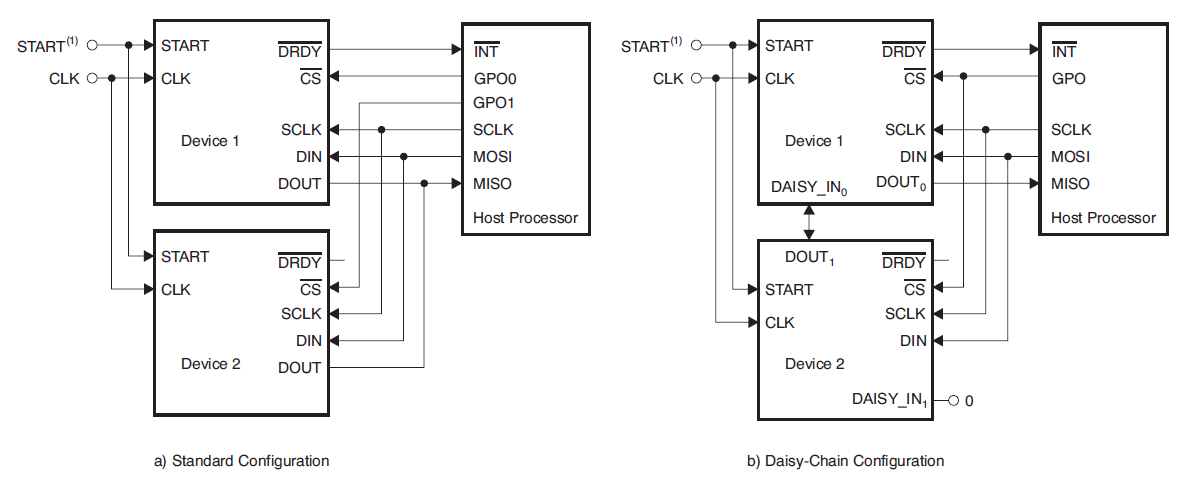Hello!
Ryan Andrews,Alexander Smith,
I have some questions。I have successfully used an ADS1299 to read data。
now,I am making a 64-ch EEG sampling system using eight pieces of ADS1299s , I want to configure the eight ADS1299 in Daisy-Chain mode.
I have searched for relevant information.
I am planning to use both ways together daisy chain and cascaded mode 。I want to be able to configure each ADS separatelly, so I need cascaded mode, then receive data in daisy chain mode.
I have some questions in the following:
1. Eight ADS1299 in Daisy-Chain mode,data rate = 1000 SPS.Reading the register data every millisecond. Do I treat the values of these 8 registers as the one register and read them out, or do I read the data of the 8 ADS registers in turn? An ADS has 27-bit registers,So do I read the data of the 216-bit register every 1ms?
2. If I use cascade mode to read data,do I need to switch 8 CS pins back and forth in 1ms?
Best Regards

